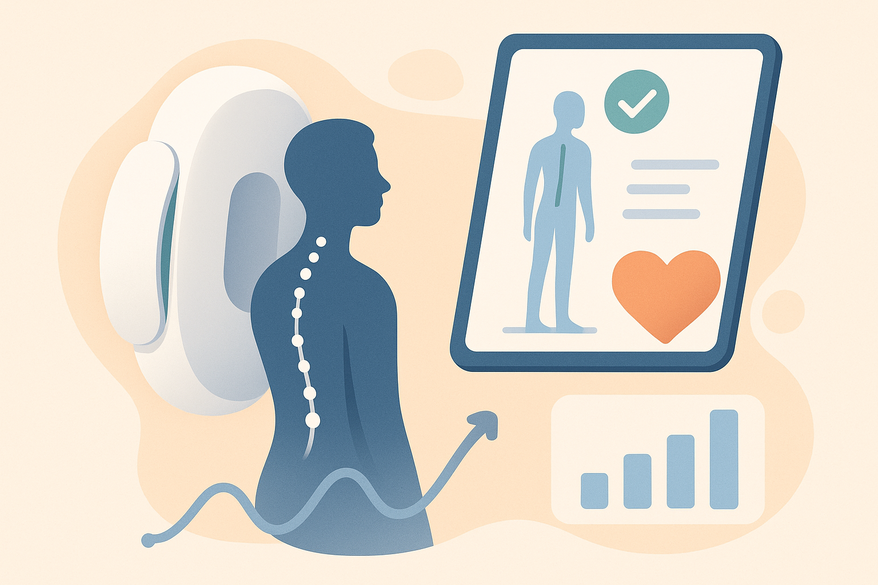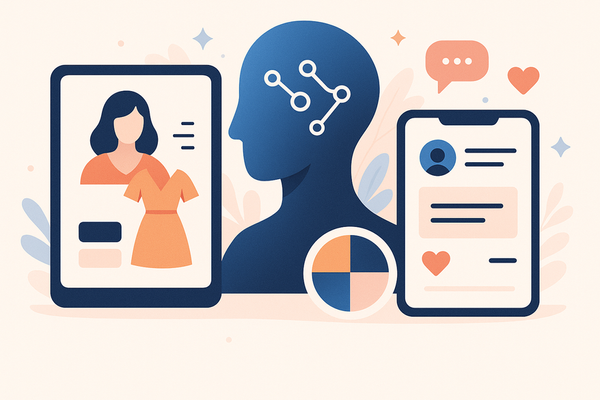Digital Posture Trainer: The Ultimate Guide to Better Posture
Discover how a digital posture trainer helps improve alignment, reduce pain, and enhance well-being with real-time feedback and personalized insights.

Estimated reading time: 7 minutes
Key Takeaways
- Definition and function: Wearable devices that monitor posture in real time using motion sensors.
- Benefits: Reduces pain, improves spinal alignment, and fosters lasting posture habits.
- Key features: High-precision sensors, app integration, customizable alerts, and seamless connectivity.
- Maximizing use: Consistent wear, goal setting, ergonomic adjustments, and complementary exercises.
- Future trends: AI personalization, ecosystem integration, ergonomic guidance, and gamified engagement.
Table of Contents
- What Is a Digital Posture Trainer?
- How a Digital Posture Trainer Works
- Benefits of a Digital Posture Trainer
- Key Features of a Digital Posture Trainer
- Tips to Maximize Your Digital Posture Trainer
- Future Trends for Digital Posture Trainers
- Conclusion
What Is a Digital Posture Trainer?
Digital posture trainers are wearable or smart gadgets equipped with motion sensors—accelerometers and gyroscopes—that continuously monitor your body’s alignment. When you slouch, the device issues real-time feedback, typically via gentle vibration, prompting you to sit or stand up straight.
Evolution from Traditional Methods
- Self-monitoring and mirrors rely on personal discipline to spot slouching.
- Ergonomic chairs and braces offer passive support but lack active reminders.
- Posture awareness classes and physical therapy require scheduled sessions.
- Digital solutions use miniaturized sensors and smartphone apps for objective, on-the-go coaching.
Advances in sensor technology and mobile connectivity have made digital posture trainers both discreet and highly accurate, bridging the gap between awareness and action.
How a Digital Posture Trainer Works
Technology Breakdown
- Accelerometers measure linear movement, tracking tilt and lean.
- Gyroscopes assess rotational motion, detecting forward head posture or side bends.
- Feedback mechanism: A gentle vibration or light alert triggers when predefined alignment thresholds are exceeded.
- Data loop: The device streams posture data to a paired smartphone app via Bluetooth or Wi-Fi.
App Integration
- Dashboard metrics: Displays time spent in correct posture, weekly trends, and a posture score.
- Notifications and reminders: Prompt you to adjust your stance after prolonged slouching.
- Training sessions: Guided “upright time” periods to build muscle memory.
- Actionable tips: Personalized insights—such as “lean back 5°” or “lift your chest”—based on your performance.
Leveraging AI posture analysis transforms health and performance can further enhance how these trainers provide insights and recommendations.
Benefits of a Digital Posture Trainer
Health Benefits
- Reduces back pain, shoulder tension, and neck discomfort by prompting timely posture corrections.
- Improves spinal alignment, boosting energy levels and overall well-being.
- Promotes active muscle engagement, fostering long-term posture improvement and reducing injury risk.
Technological Advantages
- Personalized data insights and progress tracking keep you motivated.
- Immediate, actionable recommendations simplify habit changes.
- Seamless integration with digital health ecosystems offers a holistic wellness view.
By combining health science with modern technology, a digital posture trainer offers more than static braces or manual reminders ever could.
Key Features of a Digital Posture Trainer
- Accuracy: High-precision sensors minimize false alerts; adaptive algorithms distinguish between natural movement and poor posture.
- Ease of Use: Quick setup—clip-on devices or lightweight wearable bands—and an intuitive app UI.
- Connectivity: Bluetooth or Wi-Fi syncing for real-time updates; cross-platform apps (iOS, Android) and data export options (CSV, PDF).
- Customization Options: Adjustable vibration intensity and alert thresholds; personalized training schedules and goal-setting features.
Tips to Maximize Your Digital Posture Trainer
- Consistent Wear: Start with 1–2 hours a day; gradually increase wear time to all work or study hours.
- Goal Setting: Set daily posture-practice targets (e.g., 30 minutes of “upright time”); use the app’s goal tracker to stay accountable.
- Ergonomic Adjustments: Desk height—keep elbows at 90°; chair support—use lumbar cushions if needed; screen position—top of screen at eye level.
- Complementary Exercises: Chest opener stretch; cat-camel; planks and bridges to build core stability.
- App Utilization: Schedule reminders during busy periods; review daily trends; join in-app challenges to boost motivation.
Future Trends for Digital Posture Trainers
- AI-Driven Personalization: Machine learning tailors feedback intensity and frequency to individual patterns.
- Ecosystem Integration: Sync posture data with fitness trackers, sleep monitors, and health dashboards.
- Enhanced Ergonomic Guidance: AI recommends desk and chair adjustments based on aggregated posture data.
- Gamification & Engagement: Social challenges, rewards, and virtual coaching to boost user participation.
- Device Evolution: Smarter textiles for discreet wear; lighter materials, extended battery life, and enhanced comfort.
Conclusion
A digital posture trainer bridges the gap between posture awareness and consistent action, reducing pain and improving overall well-being. By leveraging real-time feedback, personalized data, and seamless app integration, these devices transform how we maintain good posture in today’s screen-centric world.
Assess your needs, compare key features, and choose a digital posture trainer that aligns with your lifestyle. Taking this proactive step will empower you to stand taller, sit straighter, and live healthier every day.
For those tracking overall appearance and self-improvement metrics, consider exploring Maxx Report, which offers AI-powered insights across looks, transformation progress, dreams, and more.
FAQ
- How often should I wear a digital posture trainer? Start with 1–2 hours daily and gradually increase to full work or study sessions as you build comfort.
- Are posture trainers suitable for all ages? Most are adjustable for teens and adults; always consult a healthcare professional for specific spinal conditions.
- Can I use a posture trainer while exercising? It’s designed for stationary activities; remove it during intense workouts to prevent sensor damage.
- Do these devices require a subscription? Basic features usually come free; advanced analytics or coaching plans may need a monthly or annual fee.





